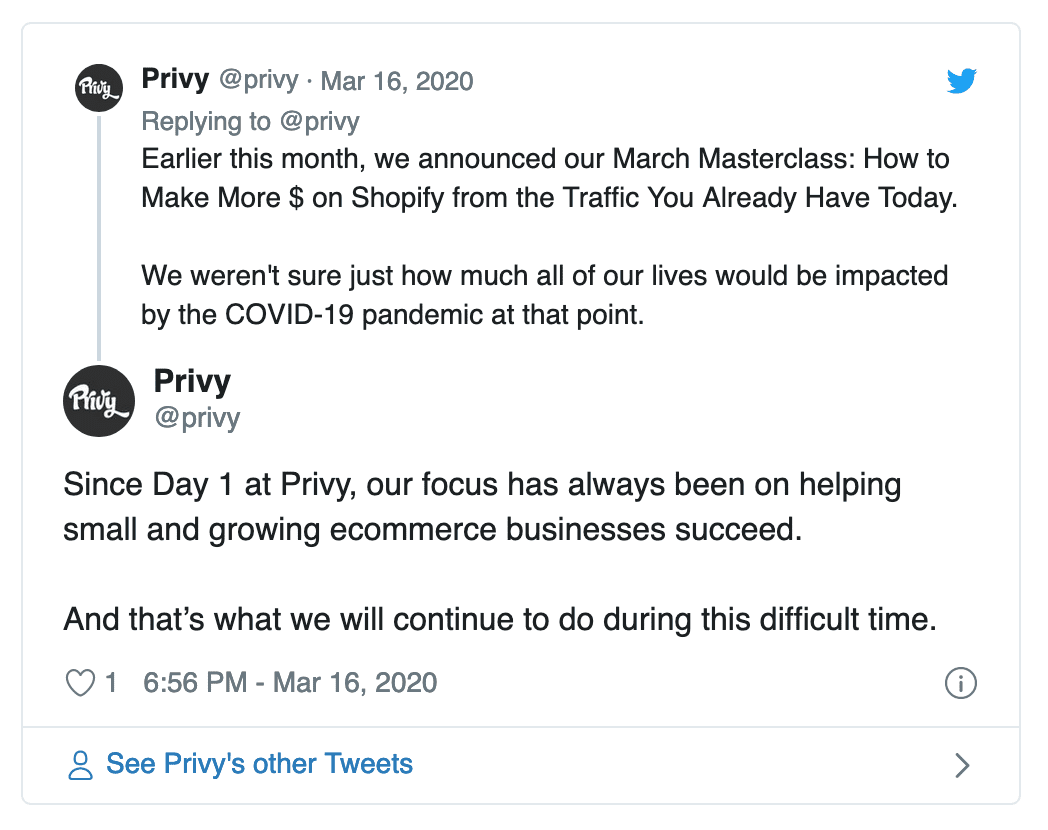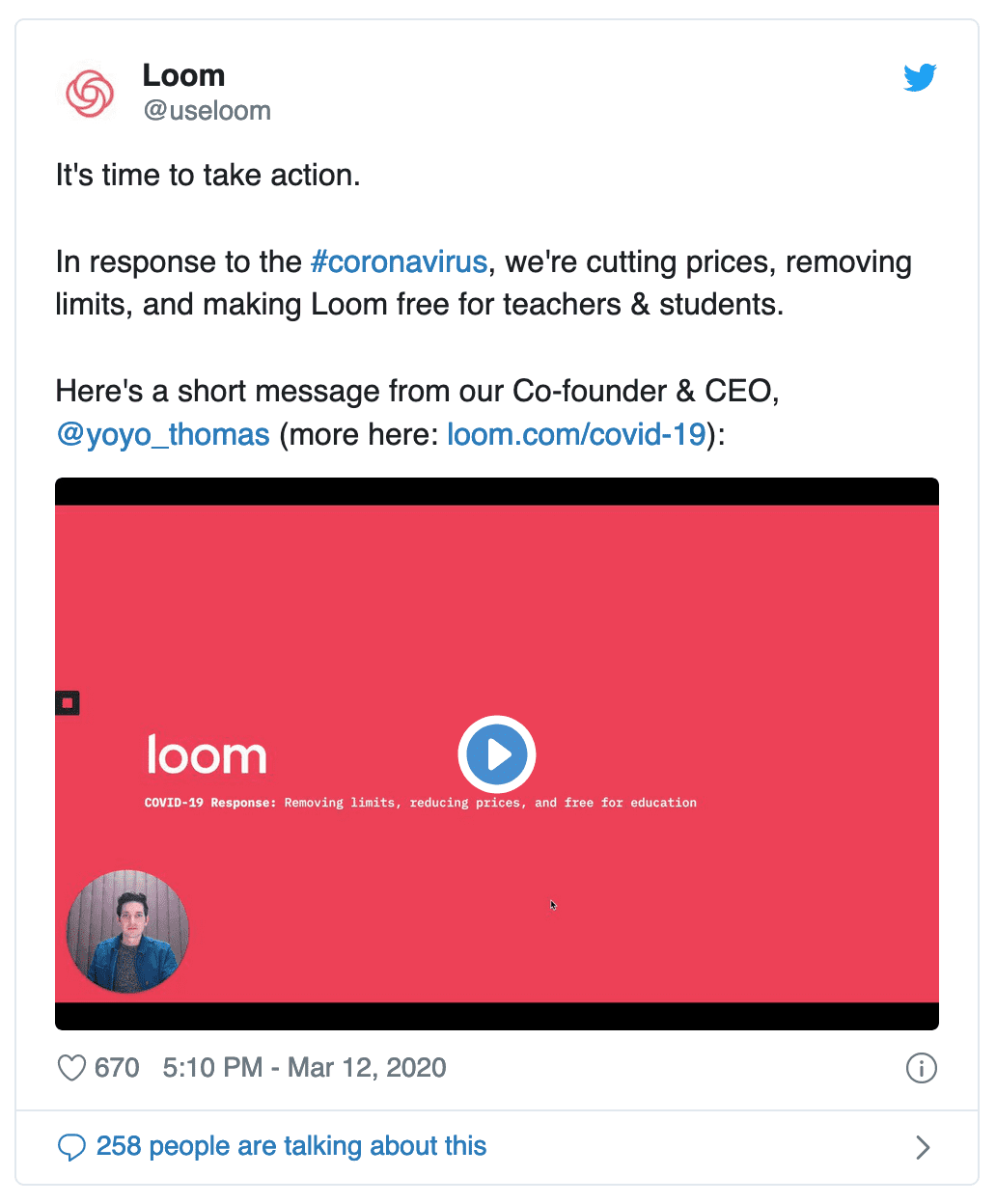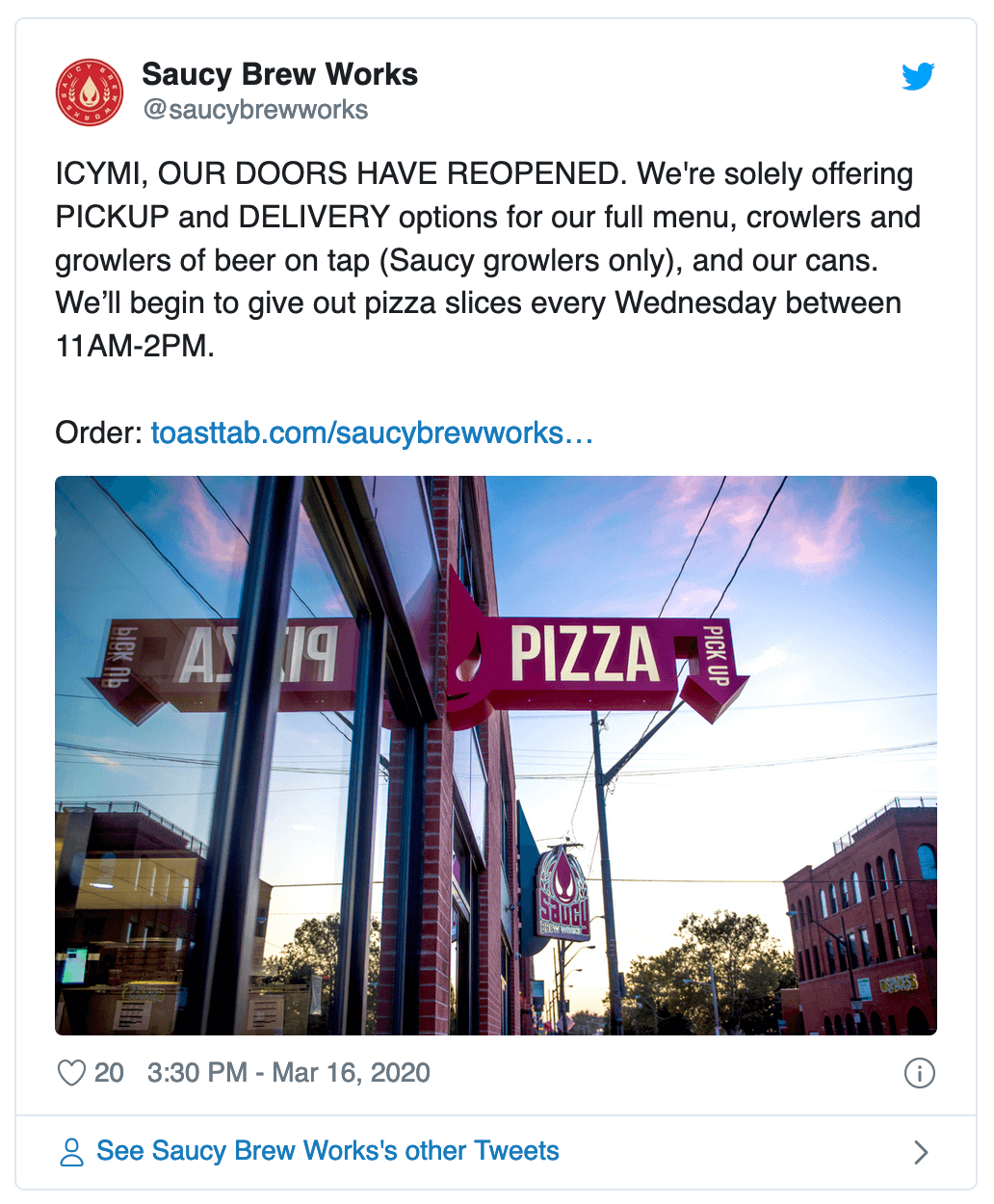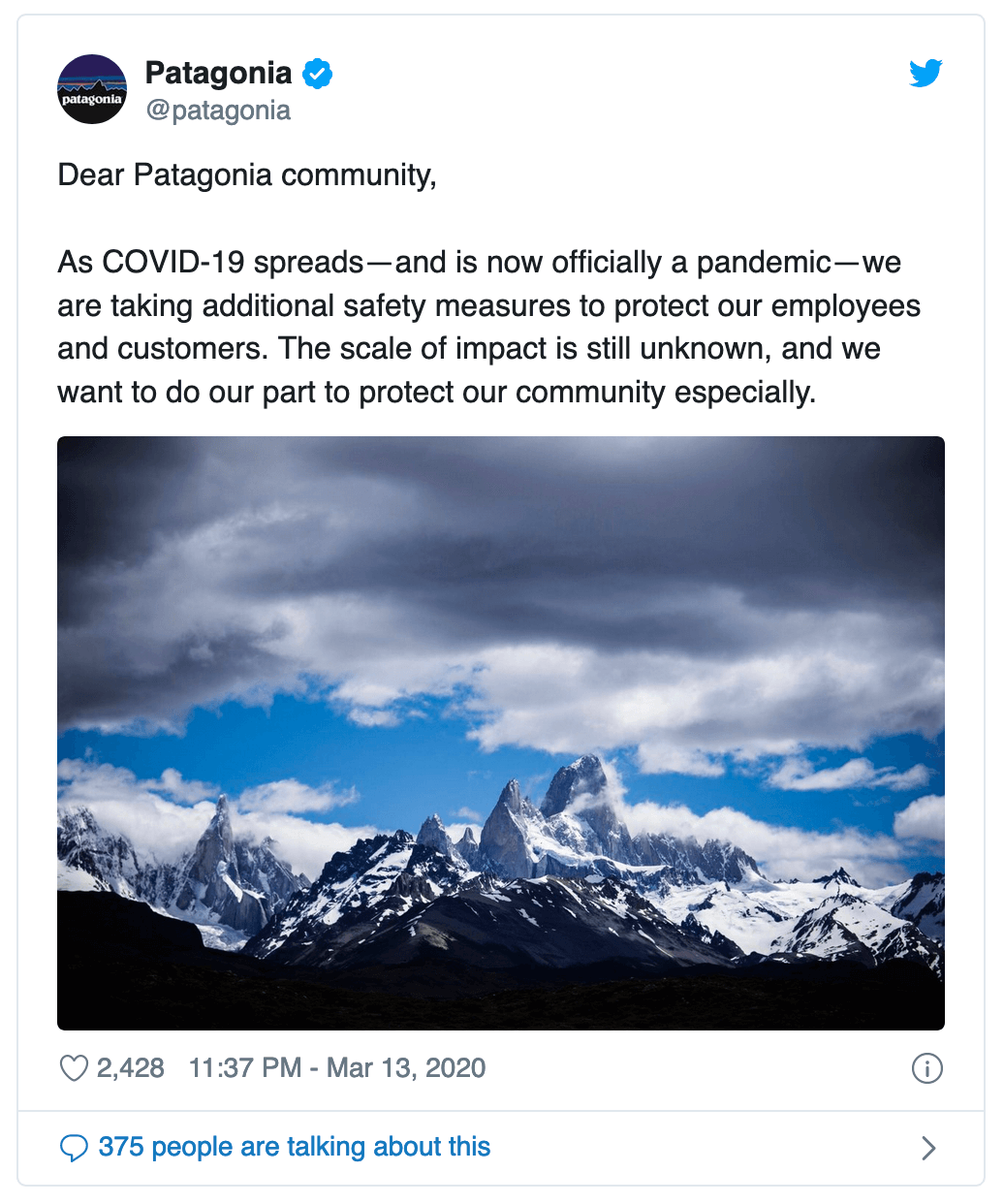
COVID-19: Social Media Management in Times of Crisis
These are times of fast-changing news around COVID-19. It’s clear that what we are facing — not just as marketers, as friends, and parents and colleagues — is unprecedented. And we’re all in it together.
Former Head of Content at Buffer
These are times of fast-changing news around COVID-19. It’s clear that what we are facing — not just as marketers, as friends, and parents and colleagues — is unprecedented. And we’re all in it together.
In times like these, people look to each other, and to their communities to figure out how to respond. Over the last, 9 years, we’re very grateful to have built up such a strong community of people who use our products, read our blogs and listen to our podcast, and we believe that it’s important that we all try to navigate these challenges together. That’s why we want to share these thoughts with you. Sometimes, it’s best to just start a conversation.
Last Thursday (March 12, 2020), as a team, we took a moment to stop and reflect. We paused our Buffer queue, as what seemed like a great and timely posts a few days ago, now felt a little irrelevant. We gathered together and we discussed what the COVID-19 situation means for Buffer, for our teammates and those closest to us, and our customers — and we’re still figuring this out.
Social media is such an important communication tool in 2020, and we know as we all try to navigate unexpected and unprecedented challenges, many of your customers and teammates will turn to social media for some form of support. And as many around the globe isolate, social media might become an even more important channel for communication and a sense of community.
So what does social media management look like over the coming weeks and months? We’re still figuring it out.
We hope that the below thoughts can act as a starting point to work from as we navigate the current and up-coming challenge.
This isn’t an opportunity
The first thing to say is that this isn’t a marketing opportunity. Brands shouldn’t be looking at the COVID-19 pandemic as something to capitalize on.
However, even though it’s not quite business as usual — every post, campaign and ad you run will need an added layer of care and empathy over the coming days and weeks — it is okay to continue to market and sell your product or services, we know for some businesses not selling products can impact the livelihoods of some of their teammates. Just don’t use COVID-19 as a platform to self-promote.
Pause and reconsider your social media plans (and goals)
If you haven’t already, now is a time to reflect on any existing plans for the end of Q1 and heading into Q2.
Many campaigns and pieces of content you had planned might be better saved for another time. We recommend rethinking your content and social media plans to tailor them to the changing needs of consumers right now.
On Monday (March 16th), we were due to launch a new, updated version of our podcast, The Science of Social Media. We had a new episode lined up, new artwork, creative and more. But we felt it wasn’t the time “celebrate” something new so we hit pause on that temporarily to focus on the more immediate needs of our customers and our audience. (We still plan to launch the new style podcast in the next week-or-so, but the launch might look a little different.)
It’s also a good time to reflect on any goals you had for the coming months as priorities may need to change. For example, new customer acquisition goals might shift towards a focus on customer retention and support.
Now is a good time to take a look at the bigger picture and what social media means to your business in a time of global crisis.
If you decide to keep some campaigns or content paused and find yourself with a few spare hours that would have been spent on content creation, promotion or analytics, now could be a good time to focus on some of the social media tasks that aren’t directly customer facing like a social media audit.
Is your company able to help
You never want to shoehorn your brand into a conversation in which it doesn’t belong. And most brands don’t belong directly in the COVID-19 conversation.
But that said, almost every business globally will be impacted in some way by COVID-19, and there might be some small things your business can do help in these moments.
At Buffer, we’ve been a remote-first company since the start, and with many businesses and workers being forced to go remote for the foreseeable future, this felt like the best place for us to help.
So after a brief pause last week, we decided to focus this week on how we might be able to help people adjusting to remote work:

Hailley also jumped into our remote work guide to freshen it up and ensure it includes all of our most useful remote work resources.
Outside of Buffer, Common Thread Collective doubled down on sharing data and insights into how it the pandemic is affecting its brands and how it’s responding:

At a time when eCommerce business might be cutting back ad budgets, Privy hosted a webinar focused on making the most from your existing traffic:

Loom made changes to its platform to help students and teachers:

And Basecamp’s co-founders hosted a Q&A about remote work:

Over the coming days and week, ask yourself: What role does your brand play in this situation?
(And it’s completely fine if feels like there’s nothing. Don’t force it.)
Think clearly about the unique role your brand plays in people’s lives. If you’re an entertainment brand, maybe your audience could do with a fun distraction, like Disney releasing Frozen 2 early.

If you’re a travel company, dealing with support might be more of a priority, so you could try to proactive about questions from your audience and give clear directions on what’s happening.

And as a local business, it could be helpful to simply share your opening hours or how you’re being affected by what’s going on. Saucy Brew Works, a brewery and restaurant in Cleveland has been keeping its followers regularly updated with open hours and updates:

Communicate clearly with customers
It’s almost always better to over-communicate than under-communicate. Especially in times of crisis.
If you’re closing your office and the team is working from home and it isn’t impacting your customers, that might not be something you’d want to communicate. If your team shifting to remote work will impact customer service response times, or delivery times, that is something worth sharing.
With so many companies impacted consumers are getting much more communication than usual from the brands and companies that they engage with, make sure that the information you are giving them is empathetic to that and focused on conveying only key messages.
When it comes to figuring out what to say when you put out a message over the coming days and week, the details matter. Strive to make all communication clear and relevant, and avoid making assumptions and share decisions early to give you customers as much time as possible to react.
Delta airlines has been great at communicating with its customers on social media over the past week-or-so. Its CEO, Ed Bastian, turned to LinkedIn to keep customers informed:

And Delta has also been sharing some additional information and context across its social channels, such as how air filtration systems work on its planes. This is a great example of over-communication that is relevant to customers who may be traveling during the crisis.

Patagonia made the decision to close its retail stores on Friday, March 13, 2020:

In its announcement, Patagonia made sure to over-communicate and provide customers with plenty of information about how it is dealing with COVID-19. In the Twitter thread sharing the announcement about its retail stores closing Patagonia told its customers:
- We will temporarily close our stores, offices and other operations at the end of business on Friday, March 13, 2020.
- Employees who can work from home will do so. All Patagonia employees will receive their regular pay during the closure.
- We apologize that over the next two weeks, there will be delays on orders and customer-service requests.
- We encourage our friends everywhere to take the extra precautions necessary to safeguard their health and that of others.
The message could have simple been “We’ll be closing our retail stores at the end of business on Friday, March 13, 2020 — but taking the time to over-communicate, and share more than it needed to, helped Patagonia to assure it’s customers that is was doing all it could for them, and to support the company’s employees.
(This Twitter thread started by Matthew Kobach has more examples of brands communicating clearly during this on-going crisis.)
Support and keep your team informed
Work will look a little different for all of us for a little while, and it’s great to embrace the concept of over-communication with your team as well as your customers.
In times of crisis, it’s important to keep in close contact with each member of your team and set some expectations around what work might look like over the next few weeks or months.
As people adapt to new working practices productivity might not be at its usual levels, and it’s important to let your team know how your company plans to deal with the effects of COVID-19 and the new work environment.
Here at Buffer, our Director of People, Courtney Seiter, and CEO, Joel Gascoigne, shared updates with us last week on COVID-19, Buffer and how the next little while might look for the team. We also have a temporary, and very optional, Slack channel where teammates can chat, share news, resources and support each other at this time. As a remote team, we’ve also been making extra effort to connect with each other for impromptu chats and get togethers, too.

There’s still a lot going on to figure out but it feels incredibly important for company leaders, and teammates alike, to be pro-active supporting their teams and each other.
Further resources on crisis communication and social media management
Here are a few resources we’ve found helpful for thinking about social media and communication strategy at this time:
- Facebook: Small Business Resource Hub
- Twitter: Brand Communications in Time of Crisis
- Harvard Business Review: Communicating Through the Coronavirus Crisis
- Ogilvy: How to Communicate in Turbulent Times
- Klaviyo: How to Communicate With Empathy During the Coronavirus Crisis
Try Buffer for free
180,000+ creators, small businesses, and marketers use Buffer to grow their audiences every month.
Related Articles

TikTok just introduced Bulletin Boards, similar to Instagram's Broadcast Channels. Here's what you need to know.

Video, photos, carousels, or text? We dug into Buffer’s data, analyzing millions of social posts from Instagram, TikTok, LinkedIn, Facebook, Threads, and X to find out which content format performs best.

In this article, you'll find 20+ essential LinkedIn statistics that reveal the platform's reach, effectiveness, and continued growth.